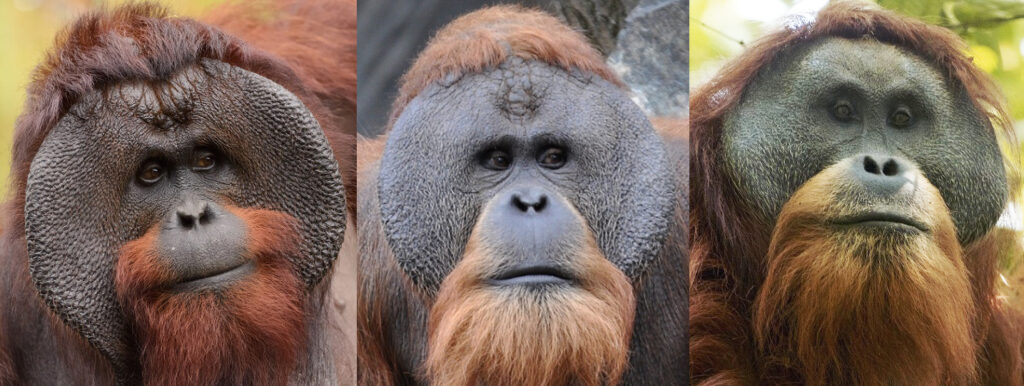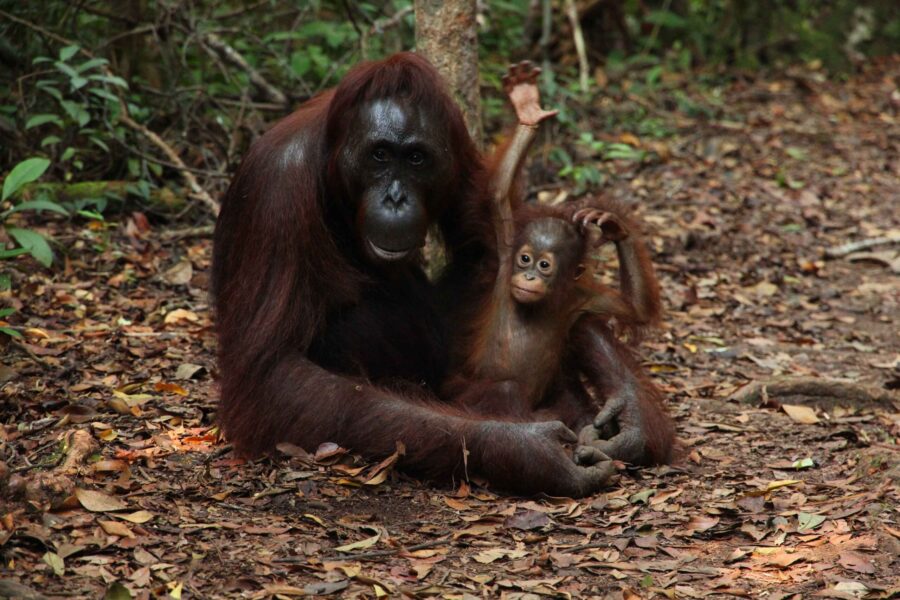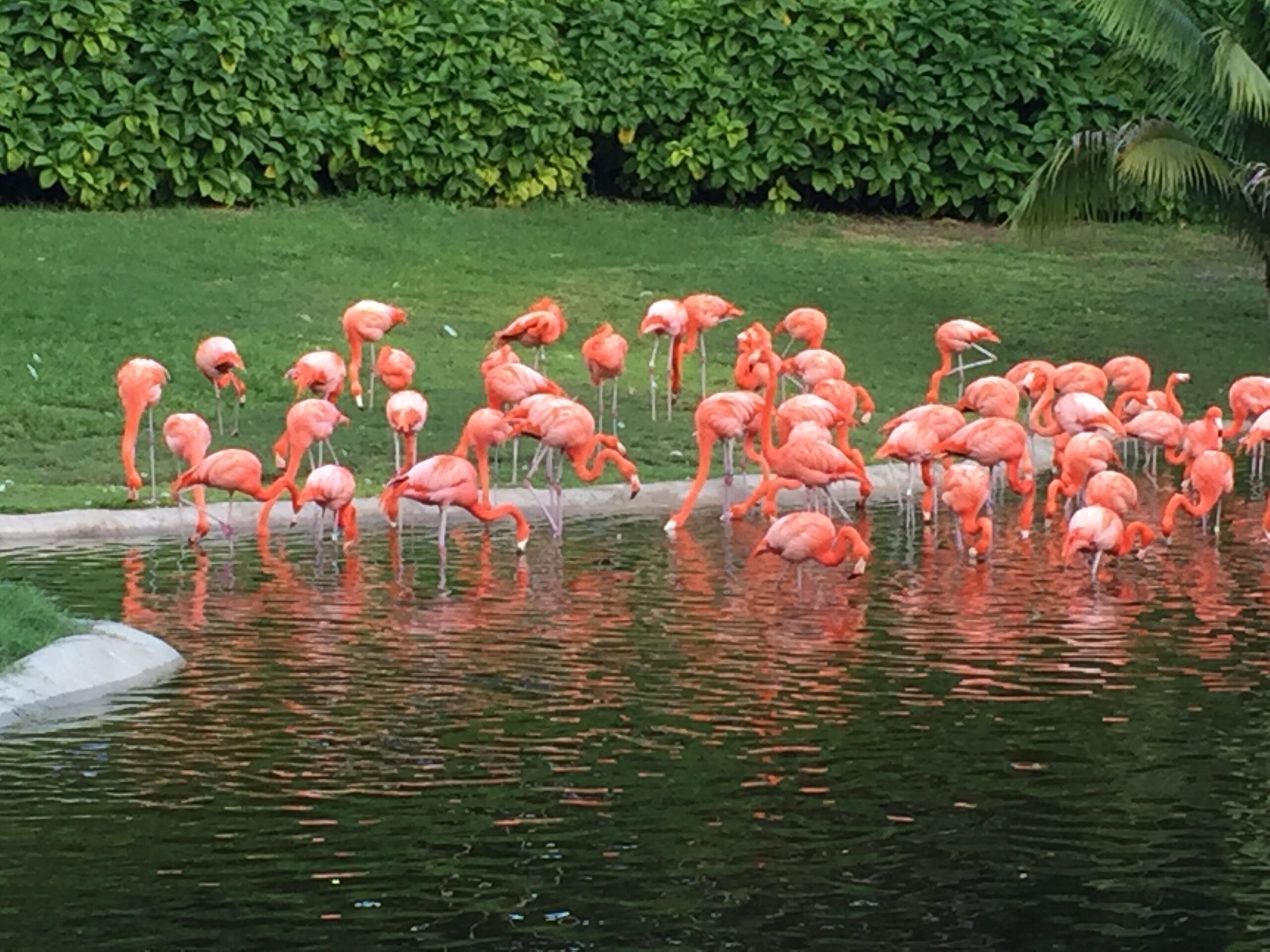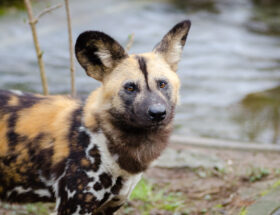This post is to learn facts about orangutans. Where do orangutans live? What do orangutans eat? Why are orangutans endangered? Read the post below to find answers to these questions and, more.
Quick and Easy Navigation
FACTS ABOUT ORANGUTANS AND PALM OIL
Why are Orangutans Endangered?
Orangutans are amazing mammals. They are one of the four great apes and the closest to humans, with 97% of their DNA the same. Unfortunately, they are at a high risk of extinction. The primary threat to their survival is habitat destruction. Palm oil production is one of the serious threats. According to the WWF, 300 football fields of rainforest are cleared hourly in Southeast Asia for palm oil. Some experts estimate that at the current rate of habitat destruction for palm oil, orangutans could face extinction in as few as 10-15 years.
Palm oil is found in many household products. It is used in baked products, chips, chocolate, cosmetics, shampoo, laundry detergent, and many more. It is a very efficient crop and it is a source of poverty alleviation and development in many regions. It is the irresponsible expansion of palm oil production that contributes to widespread forest destruction and biodiversity loss.
The good news is that habitat destruction for palm oil production can be avoided. There is a lot we can do to help the orangutans retain their habitat and avoid extinction. The goal is not to replace palm oil but to replace our consumption of products made with palm oil for products made with sustainable palm oil. Which is palm oil produced in plantations away from orangutans’ habitats.
Purchasing products with Sustainable Palm Oil is a great way to help save the orangutans from extinction
What Does RSPO Stand for?
RSPO stands for Roundtable on Sustainable palm oil. This organization was established in 2004 with the goal to promote the production of sustainable palm oil and reduce the negative impact irresponsible palm oil production expansion has on forests and biodiversity. The organization has established a set of environmental and social criteria to which the various sectors of the palm oil industry such as palm oil producers, processors or traders, consumer goods manufacturers, and retailers must comply with in order to produce Certified Sustainable Palm Oil (CSPO).
How To Find Sustainable Palm Oil Products or CSPO
How do you know if a product is made with sustainable palm oil? Many brands have licensed the RSPO trademark and use the white palm frond symbol with the words “Certified Sustainable Palm Oil RSPO” The RSPO also has a mobile app you can download and search for RSPO certified products. RSPO Mobile App.
The WWF has created a Palm Oil Buyers Scorecard to help you find the brands that are committed to a responsible pam oil future. You can research your brands on the WWF site and see how they score.
I use an app from the Cheyenne Mountain Zoo called sustainable palm oil shopping. It is very easy to use and has a very large database.
Let’s start by learning more about this amazing ape and spreading the word about them! See some amazing facts below.
Orangutans Facts | Species | Habitats | Fun Facts
Orangutan Species
There are three species of orangutans and all are found in the islands of Borneo and Sumatra. These are the Bornean Orangutan, the Sumatran Orangutan and the Tapanuli Orangutan.

Image Credit: By Eric KilbyAiwokTim Laman – CC BY-SA 3.0
While they are all reddish with shaggy fur, they differ slightly in appearance and behavior. The Bornean Orangutan has a wider face with a larger throat pouch. The Sumatran Orangutan has a narrower face and a longer beard. Bornean orangutan are native to Borneo and the Sumatran orangutan originates from Sumatra. Behaviourally, the most commonly cited difference is that the Bornean orangutan is most likely to descend from the tree and wander about on the forest floors. This is probably because tigers are found in the forest of Sumatra, thus the Sumatran orangutan is more likely to stay in the safety of the trees.
The Tapanuli orangutan was announced as a species in 2017. New species of orangutan announced. They were discovered in 1997 during a survey in the region of Batang Toru Ecosystem of Sumatra. They are believed to have been isolated from other orangutans for 10,000 to 20,000 years. The Tapanuli orangutan more closely resembles the Sumatran orangutan than the Bornean orangutan. However, they have smaller heads and flatter wide faces. The Tapanuli orangutan population is estimated at 800 or fewer, making them the rarest and most endangered orangutan species.
17 FUN FACTS ABOUT ORANGUTANS
- Orangutans are large red-haired Apes.
- Their scientific name is “Pongo”.
- Where do orangutans live? They live in the tropical rain-forests of Sumatra and Borneo in Southeast Asia.
- They are humans cousins with 97% of the same DNA.
- Orangutans are very intelligent. They build and use tools.
- They are solitary. Unlike other great apes (chimpanzees, gorillas, bonobos), they like to be alone instead of in groups.
- They are also the most arboreal of all the great apes and spend most of their life on trees. They use their long, strong arms and hook-shaped hands to climb and swing from branch to branch.
- Females usually hang out with their babies, but males like to be alone.
- They are between 4-5 feet tall and weigh between 75 to 170lbs. Males are much larger than females.
- They have tremendous arm strength that allows them to hang from trees while they eat. Males have a serious arm span of about 7 feet long!
- They are pretty loud. The male’s howl can be heard over a mile away.
- They build nests every night in leafy branches to rest and stay safe from predators such as leopards.
- What do orangutans eat? They eat mostly fruits and leaves but they can also eat nuts, bark, and insects.
- They can live up to 40 years in the wild.
- They are listed as critically endangered in the IUCN Red List. It is estimated that there are less than 120 thousand left in the world. Some of the threats to the survival of the orangutans include deforestation for palm oil production, illegal hunting, and most recently forest fires.
- Orangutans play a vital part in the ecosystem because they help spread many different tree seeds. They are known as the gardeners of the forest.
- Many of the seeds they eat can only germinate once they have passed through the gut of an orangutan 😊.
Other Sources: National Geographic Kids, WWF, Orangutan Foundation, RSPO, LiveScience

Orangutan Facts Videos
More Posts on Animal Facts you May Like:
Learn Interesting Facts About Koala Bears
Facts About African Wild Dogs – AKA Painted Dog or Painted Wolf











